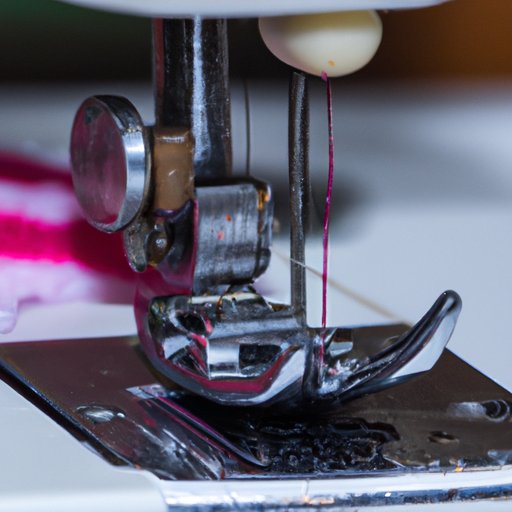Introduction: What is a Sewing Machine and How Does it Work?
Sewing machines have been around for centuries, aiding people in creating garments, upholstery, quilts, and more. Whether you’re a beginner or a professional seamstress, having a good understanding of how a sewing machine works can help you make the most of your projects. This article provides an overview of the different types of sewing machines, a step-by-step guide to sewing machine mechanics, a beginner’s guide to understanding sewing machine parts, and tips for troubleshooting common sewing machine problems.
Overview of Different Types of Sewing Machines
There are many different types of sewing machines available on the market today. The most basic type of sewing machine is the mechanical sewing machine, which is operated by hand and has limited features. Electronic sewing machines, on the other hand, are powered by electricity and offer more features and capabilities. Computerized sewing machines are the most advanced type of sewing machine and are capable of performing complex operations with the push of a button.
Step-by-Step Guide to Sewing Machine Mechanics
Learning the mechanics of how a sewing machine works can help you make the most of your projects. Here is a step-by-step guide to understanding the basic mechanics of a sewing machine.

Exploring the Components of a Sewing Machine
The first step in understanding how a sewing machine works is to explore its components. A typical sewing machine consists of a needle, thread, bobbin, presser foot, feed dogs, fabric plate, and stitch selector. The needle is responsible for piercing the fabric and forming the stitches. The thread forms the stitches and is passed through the needle. The bobbin holds the thread and is placed underneath the fabric plate. The presser foot holds the fabric in place while the feed dogs move the fabric forward and backward. The fabric plate keeps the fabric flat while the stitch selector determines which type of stitch will be used.
The Basics of Sewing Machine Operation
Once you understand the components of a sewing machine, you can begin to explore its operation. To start, you must thread the needle and bobbin. Once the thread is in place, you can select the desired stitch pattern on the stitch selector. Then, you must adjust the tension of the thread to ensure that the stitches are formed correctly. Finally, you must lower the presser foot and begin stitching by pressing the foot pedal. As you sew, the feed dogs will move the fabric forward and backward.
A Beginner’s Guide to Understanding Sewing Machine Parts
In addition to learning the mechanics of how a sewing machine works, it is important to understand the various parts of the machine. Here is a beginner’s guide to understanding the parts of a sewing machine.

An Overview of Different Parts
A sewing machine consists of several different parts, including the needle, thread, bobbin, presser foot, feed dogs, fabric plate, and stitch selector. Each part has its own purpose and it is important to understand how they all work together to form stitches.
How to Identify Parts and Their Functions
When identifying the different parts of a sewing machine, it is important to note their functions. The needle is responsible for piercing the fabric and forming the stitches. The thread forms the stitches and is passed through the needle. The bobbin holds the thread and is placed underneath the fabric plate. The presser foot holds the fabric in place while the feed dogs move the fabric forward and backward. The fabric plate keeps the fabric flat while the stitch selector determines which type of stitch will be used.

How to Troubleshoot Common Sewing Machine Problems
It is inevitable that you will encounter some issues when using a sewing machine. Here are some tips for troubleshooting common sewing machine problems.

Common Issues to Look Out For
Some of the most common issues that you may encounter when using a sewing machine include thread tangles, uneven stitches, skipped stitches, and broken needles. If you notice any of these issues, the best thing to do is to take a break and examine the machine for any potential issues.
Tips for Troubleshooting
If you are having trouble with your sewing machine, the first step is to check the manual for any potential solutions. If the issue persists, it is best to contact a professional who can inspect the machine and provide advice. Additionally, if the machine is not functioning properly, make sure to unplug it before attempting any repairs.
Conclusion
Sewing machines have been around for centuries, helping people create garments, upholstery, quilts, and more. Having a good understanding of the different components of a sewing machine and how they work together can help you make the most of your projects. This article provided an overview of the different types of sewing machines, a step-by-step guide to sewing machine mechanics, a beginner’s guide to understanding sewing machine parts, and tips for troubleshooting common sewing machine problems.
(Note: Is this article not meeting your expectations? Do you have knowledge or insights to share? Unlock new opportunities and expand your reach by joining our authors team. Click Registration to join us and share your expertise with our readers.)
